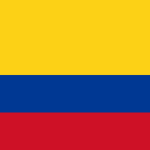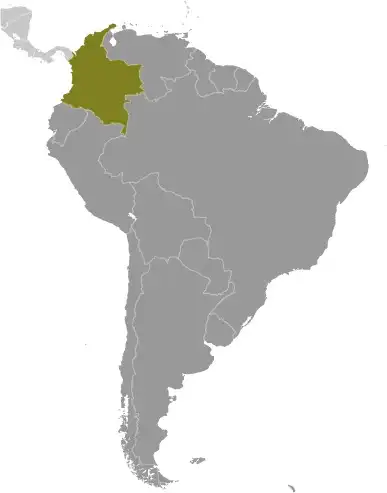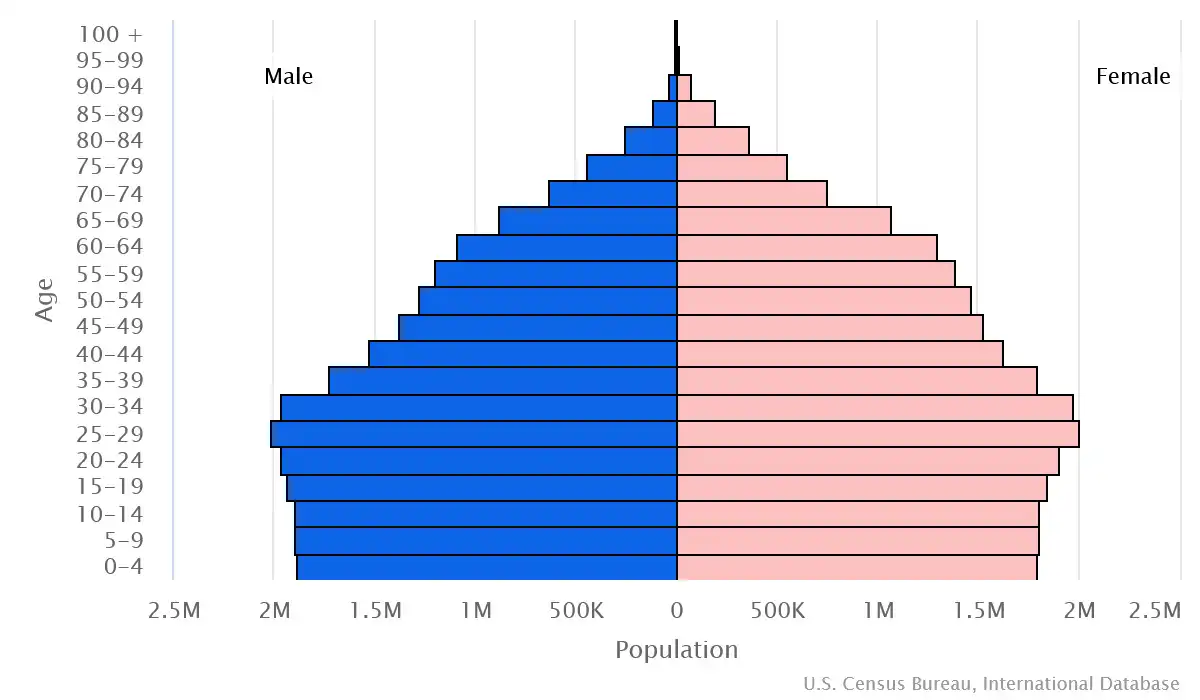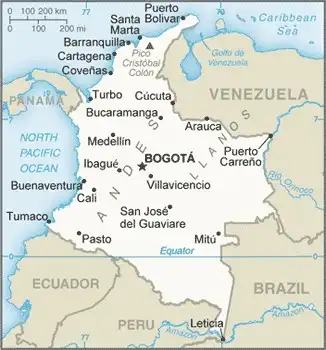
Colombia
Country Data Dashboard

| Government type: | presidential republic |
| Capital: | Bogotá |
| Languages: | Spanish (official) 98.9%, indigenous 1%, Portuguese 0.1%; 65 indigenous languages exist (2023 est.) |
People & Society
Ethnicity (2018 est.)
Religion (2023 est.)
Age structure

Economy
Economic overview
prior to COVID-19, one of the most consistent growth economies; declining poverty; large stimulus package has mitigated economic fallout, but delayed key infrastructure investments; successful inflation management; sound flexible exchange rate regime; domestic economy suffers from lack of trade integration and infrastructure
Real GDP (purchasing power parity) in Billion $
Real GDP per capita in $
Exports & Imports in billion $
Top 5 Import Partner in 2022 (66%)
Top 5 Import Commodities in 2022
- refined petroleum ⛽
- cars 🚗
- broadcasting equipment 📡
- corn 🌽
- packaged medicine 💊
Top 5 Export Partner in 2022 (66%)
Top 5 Export Commodities in 2022
- crude petroleum 🛢️
- coal ⚫
- coffee ☕
- refined petroleum ⛽
- gold 💰
Geography
Map

Area
Natural resources
- petroleum 🛢️
- natural gas 💨
- coal ⚫
- iron ore ⛓️
- nickel 🪙
- gold 💰
- copper 🟧🪙
- emeralds 💚
- hydropower 💧⚡
Climate
tropical along coast and eastern plains; cooler in highlands
Historical Background Information
Colombia was one of three countries that emerged after the dissolution of Gran Colombia in 1830 -- the others are Ecuador and Venezuela. A decades-long conflict among government forces, paramilitaries, and antigovernment insurgent groups heavily funded by the drug trade -- principally the Revolutionary Armed Forces of Colombia (FARC) -- escalated during the 1990s. In the wake of the paramilitary demobilization in the 2000s, new criminal groups arose that included some former paramilitaries. After four years of formal peace negotiations, the Colombian Government signed a final accord with the FARC in 2016 that called for its members to demobilize, disarm, and reincorporate into society and politics. The accord also committed the Colombian Government to create three new institutions to form a 'comprehensive system for truth, justice, reparation, and non-repetition,' including a truth commission, a special unit to coordinate the search for those who disappeared during the conflict, and a 'Special Jurisdiction for Peace' to administer justice for conflict-related crimes. Despite decades of internal conflict and drug-trade-related security challenges, Colombia maintains relatively strong and independent democratic institutions characterized by peaceful, transparent elections and the protection of civil liberties.
